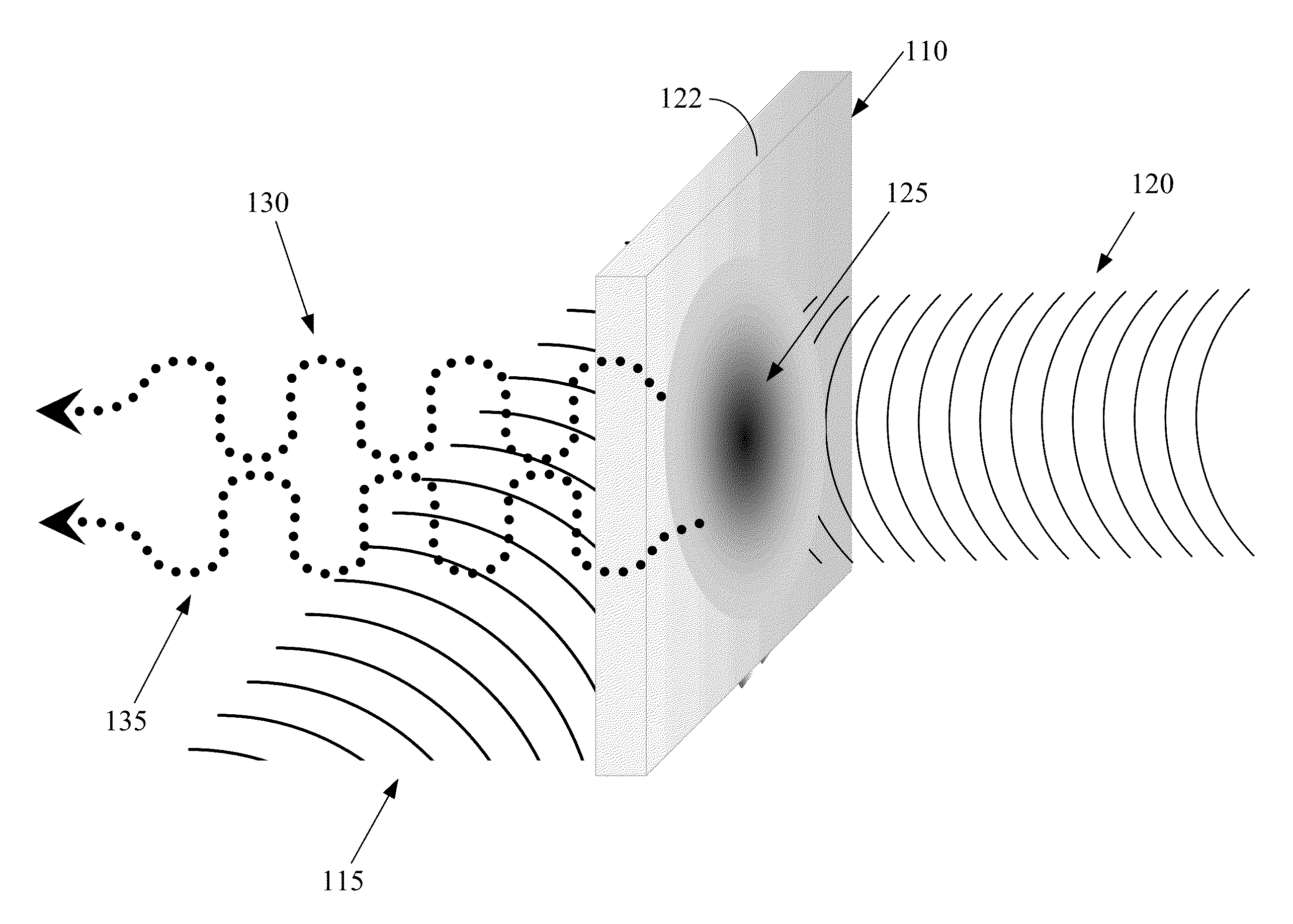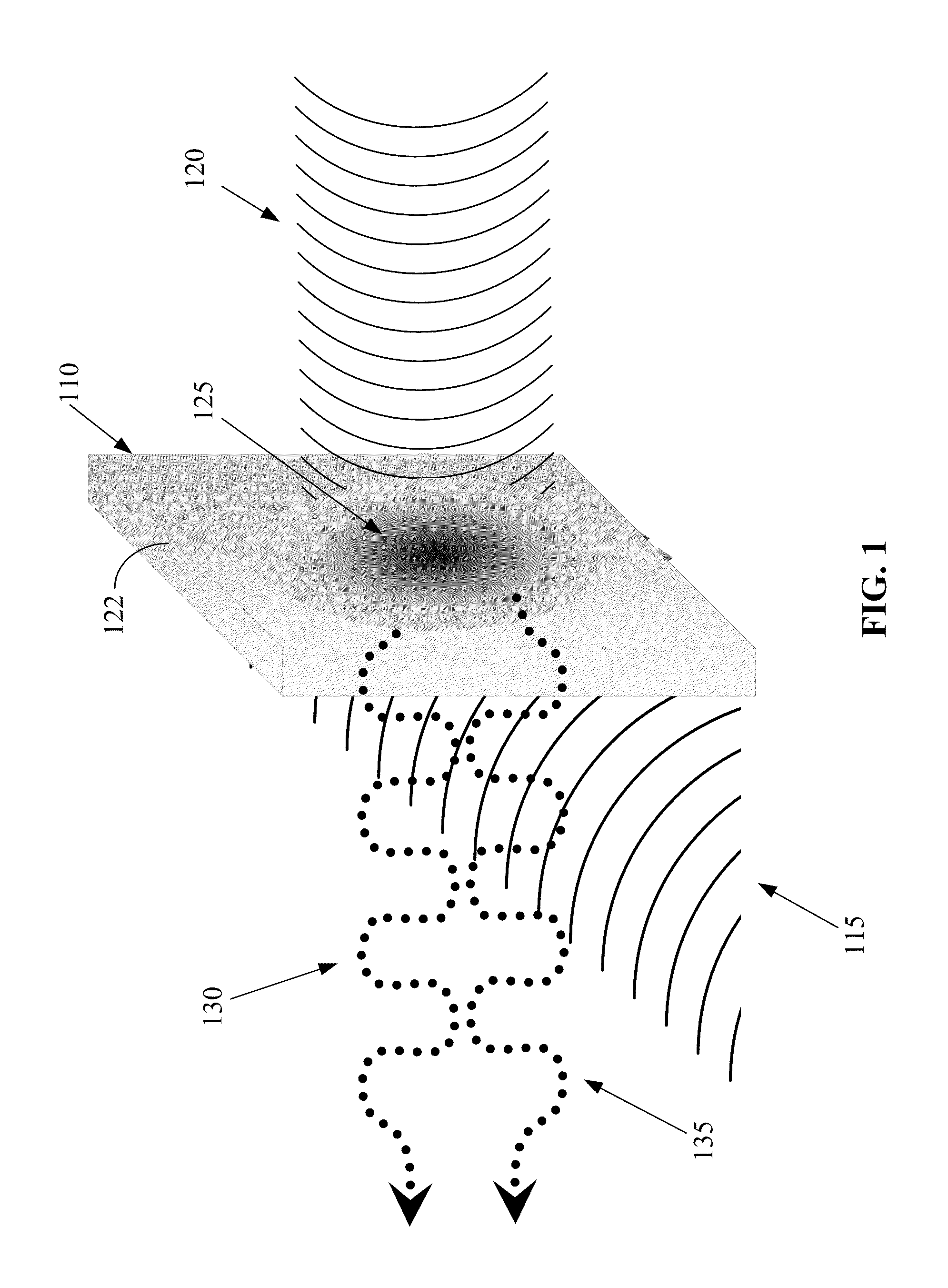Laser drawn electronics
- Summary
- Abstract
- Description
- Claims
- Application Information
AI Technical Summary
Benefits of technology
Problems solved by technology
Method used
Image
Examples
Embodiment Construction
[0020]FIG. 1 shows an example of a photoconversion material 110 that converts incoming photons 115 into electrical energy. The photoconversion material 110 may comprise one or more solar cells, Stark cells, thermophotovoltaic cells or other type of photoconversion material such as a photovoltaic material. A Stark cell can be modeled as a photodiode in sheet form (a large expanse of photodiode junctions merged into one) that behaves like a solar cell except that, because the nanostructure of its metamaterials is configured at a scale to resonate with lower frequency light, it may convert “earthshine” rather than sunshine into electrical energy. Earthshine is radiated from the earth and has a wavelength in the Infrared spectrum (peaking at ˜10.5 micron). In one aspect, the Stark cell may be tuned to different wavelengths (e.g., earthshine, sunshine, etc.) to covert photons at the different wavelengths into electrical energy. Additional details on Stark cells can be found, for example,...
PUM
 Login to View More
Login to View More Abstract
Description
Claims
Application Information
 Login to View More
Login to View More - R&D
- Intellectual Property
- Life Sciences
- Materials
- Tech Scout
- Unparalleled Data Quality
- Higher Quality Content
- 60% Fewer Hallucinations
Browse by: Latest US Patents, China's latest patents, Technical Efficacy Thesaurus, Application Domain, Technology Topic, Popular Technical Reports.
© 2025 PatSnap. All rights reserved.Legal|Privacy policy|Modern Slavery Act Transparency Statement|Sitemap|About US| Contact US: help@patsnap.com



